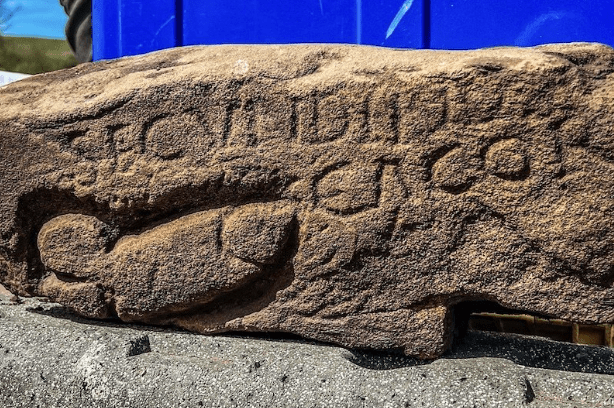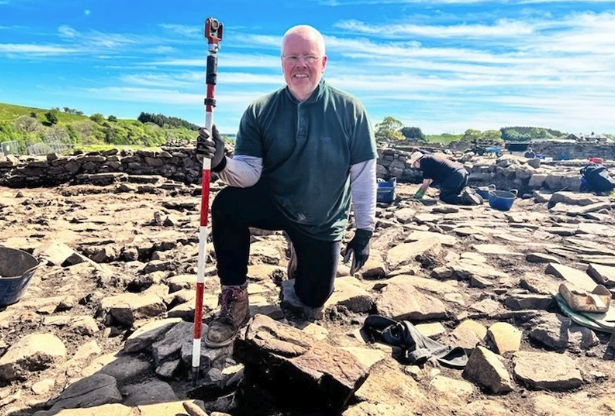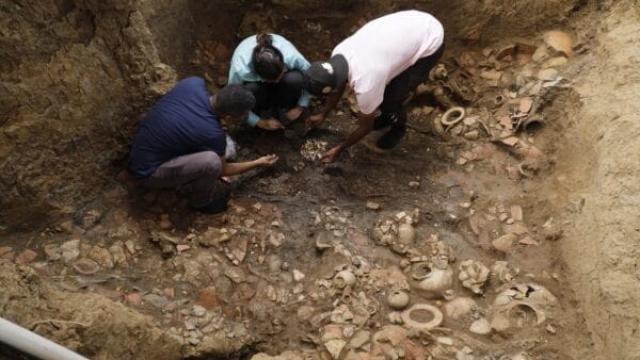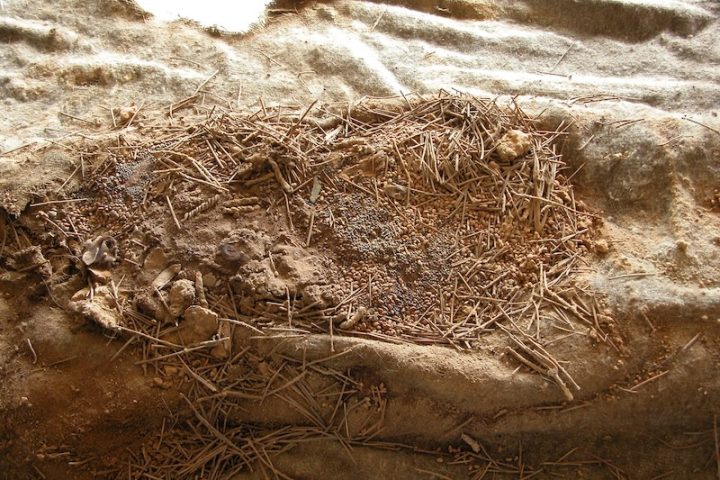Archaeologists in England were quite surprised when they discovered an obscene carving on a stone in the Roman fortress.

The graffiti had a penis accompanied by a phrase that experts said meant “Ass” next to one’s name, and it appears to have been engraved by a Roman soldier to insult his friend.
The stone, which is 40 centimeters wide and 15 cm tall, was unearthed on May 19 at Vindolanda, the ruins of a Roman fortress just south of Hadrian’s Wall. Archaeologists think that graffiti was carved into stone in the 3rd century AD.
Hadrian’s Wall was a fortified structure built throughout England to defend Roman Britain against the Pictes in Caledonia, serving as the northern frontier of the Roman Empire.
Volunteer archaeologist Dylan Herbert, a retired biochemist from Wales, uncovered the stone in his second week at the excavation site. (The Vindolanda Charitable Trust, which is responsible for excavating the site, works with volunteers to help archaeologists properly explore the vast area.)
Herbert said, “It looked like an ordinary stone from behind, but when I turned it over I was startled to see some clear letters. “But after removing the mud, I realized the full extent of what I was revealing, and I was absolutely delighted.”
The first noticeable feature of the stone was the penis carved on it, but researchers were more interested in the writing that accompanied it. Experts considered the phrase “SECUNDINUS CACOR” to be an abbreviation of the word “SECUNDINUS CACATOR”, which, according to the description, means “Secundinus, ass”.

Andrew Birley, excavation director and CEO of the Vindolanda Charitable Trust, said in a statement: “The discovery of an inscription that is a direct message from the past is always a major event at a Roman excavation site. “But when we deciphered the message in this stone, we were really surprised.”
Phallus carvings were not uncommon in the Roman Empire: The new carving is the 13th phallus representation unearthed at Vindolanda, and so far only a quarter of the site has been completely excavated. In June 2021, a carving of a naked cavalry and his horse was also unearthed in Vindolanda. According to the description, the phallus was normally depicted as a symbol of good luck or fertility.
However, the recently discovered graffiti amounts to an insult. The depth of the lines carved into the rock shows that the artist spent a lot of time working on the stone, which emphasizes how passionately he despised Secundinus, according to the statement.
Placing the stone in a visible place in the castle should have been one of the most effective ways to embarrass someone at the time. Researchers say the new carving is the Ancient Roman equivalent of vilifying someone on social media today.
Birley; “It is clear that his author had a big problem with Secundinus and was confident enough to explain his thoughts to everyone. I have no doubt that Secundinus would have had less fun seeing it when he roamed the region more than 1,700 years ago.”
BBC May 2022




